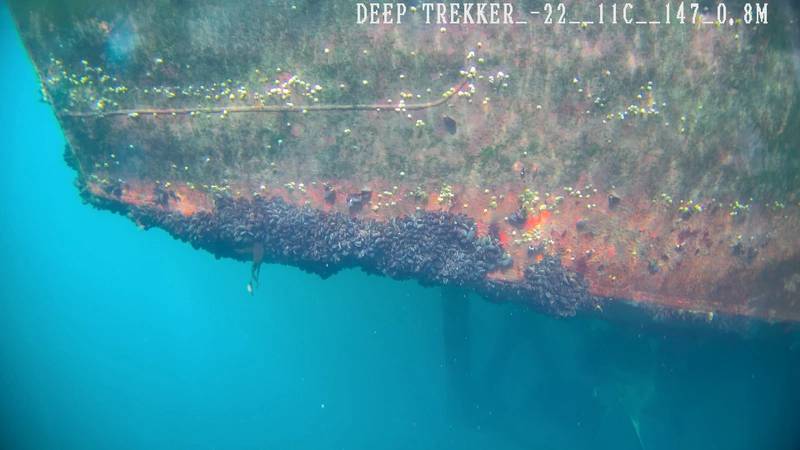Deep Trekker announced its participation in the AI ROV Ship Modeling and Detection Project, introduced September 12, 2024 at the ALL IN Conference.
This initiative, in collaboration with Canada’s Ocean Supercluster (OSC), Qii.AI, The Department of National Defence, Kongsberg Discovery Canada Limited, and ABS Global Canada, harnesses cutting-edge Remotely Operated Vehicle (ROV) technology integrated with advanced artificial intelligence to redefine ship hull inspections for greater precision and efficiency, setting a new standard in the industry.
“We are proud to announce the AI ROV Ship Modeling and Detection Project led by Deep Trekker together with partners across the country.” said Kendra MacDonald, CEO of Canada’s Ocean Supercluster. “By co-investing with the industry in the important advancement of AI in the ocean sector, we are also contributing to advancements in ship modeling and detection as well as increased safety, environmental protection, economic efficiency, and job creation.”
At the core of this project are Deep Trekker’s ROVs, designed with ultra high-resolution 4K cameras, multibeam imaging sonar, and robust sensor arrays, which allow for detailed and accurate data collection in real time.
Inspection results will be consolidated into a detailed data dashboard, which includes 3D models, video, sonar clips, and high-resolution images, offering a thorough assessment tool by providing inspectors and engineers with a comprehensive visualization of the hull’s condition.
Image courtesy Deep Trekker
“This project represents a significant leap in our ROVcapabilities,” said Sam Macdonald, President of Deep Trekker. “Our vehicles are engineered to perform in the harshest maritime environments, and by integrating AI, we can now provide highly detailed inspections that were previously unattainable. Operators will have access to detailed visual outputs such as 3D models, sonar clips, and annotated high-resolution images, all of which can be processed and analyzed immediately.”
Advanced Sensor Integration
Key to the system’s performance is its integration of advanced positioning sensors, which enable precision navigation even in areas with poor visibility or difficult underwater conditions. This positioning capability is essential for ensuring the ROV maintains a stable course along the hull, minimizing drift and improving data accuracy. The integration of ROV GPS, USBL, and dead reckoning technology allows for continued tracking when external GPS signals are lost, ensuring consistent operation in confined or murky waters.
With a project value of $8,108,000, and a $3,405,306 contribution from Canada’s Ocean Supercluster, the AI ROV Ship Modeling and Detection Project stands to revolutionize the maritime industry’s approach to hull inspections. It not only enhances the safety and operational reliability of ships but also supports environmental stewardship by identifying issues before they escalate.
Beyond technological advancements, the project is expected to improve safety standards, support and promote environmental responsibility, and enhance economic outcomes in Canada’s maritime industry by driving job creation and reinforcing Canada’s status as a leader in AI-driven ocean technologies.

